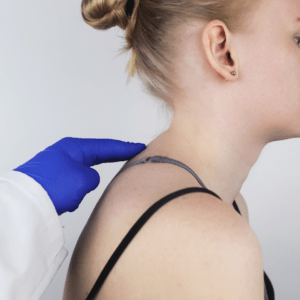The truth about tennis elbow
Did you know that tennis elbow rarely has anything to do with tennis? 🎾 Fewer than one in ten tennis players actually develop the condition. 🤯 Around 5% of people whose jobs involve repetitive arm motions or vibrating tools develop tennis elbow.
Clinically, tennis elbow is referred to as lateral epicondylitis and is a condition that causes pain around the outside of the elbow. 😢
How is it caused?
Although it is sometimes because of trauma, tennis elbow is usually caused by overusing the muscles attached to the elbow. These muscles are what we use to extend our wrist. If these muscles are strained, tiny tears and inflammation can develop where the muscle attaches to the bone (the tendon) on the outside of the elbow, which is called the lateral epicondyle. 😣
Any activity that puts repeated stress on the elbow joint can cause the issue. Tennis elbow can also be caused by poor blood supply to the area, improper healing of other injuries and poor movement of the joints the muscle attaches to.
What does it feel like?
If you’re wondering whether or not you actually have tennis elbow, look out for these symptoms and sensations:
· A small, uncomfortable ache on the outside of your elbow that worsens over time.
· Severe burning pain around your elbow – ouch! 😫
· A weakened grip.
· Your elbow feels sensitive to touch. 💪
· Everyday activities such as shaking hands, shaving, twisting your arm, or lifting light objects become painful or difficult.
How we treat it
When it comes to tennis elbow, we use a range of techniques address your problem. Firstly, we assess the muscles of the arm, check the elbow and wrist joints (where the muscles attach) and do some orthopedic tests to check the function of the joints and muscles of the arm.
Usually, gentle adjustments of the elbow joints, massage to the muscles, dry needling (a form of acupuncture), stretches and strengthening exercises help. Also, rest and reducing aggravating movements help too.
We will, of course, work out a course of treatment designed to suit you and your body and the kind of injury you have developed. Our expert team is also able to provide you with exercises that you can do at home that will help with your recovery.
Our mindset can help too. A recent study conducted by the Journal of Shoulder and Elbow Surgery monitored patients with diagnosed tennis elbow for a year. Those who described their conditions with the words “temporary” or “reversible” improved far more than those who used the words “damaged” or “degenerated” or “permanent”. This is a true testament to how an optimistic attitude can help you to cope. 🧘♀️
What you can do to prevent it?
The best way to prevent getting tennis elbow is to avoid it building up over time. Look out for repetitive movements at work🤔, heavy lifting, or repetitive sporting activities, that cause a repetitive strain to your elbow joint. Start becoming aware of how you move and changing your technique to ease the problem 🏃♀️. Whatever the cause, we are here to help.
Contact us to talk more about tennis elbow.





